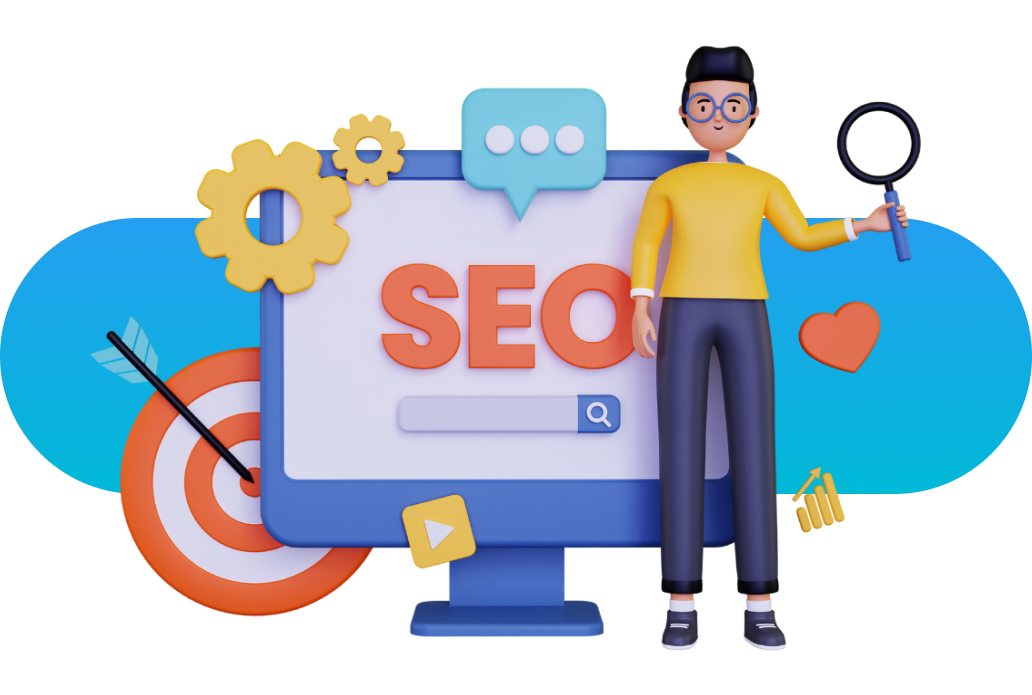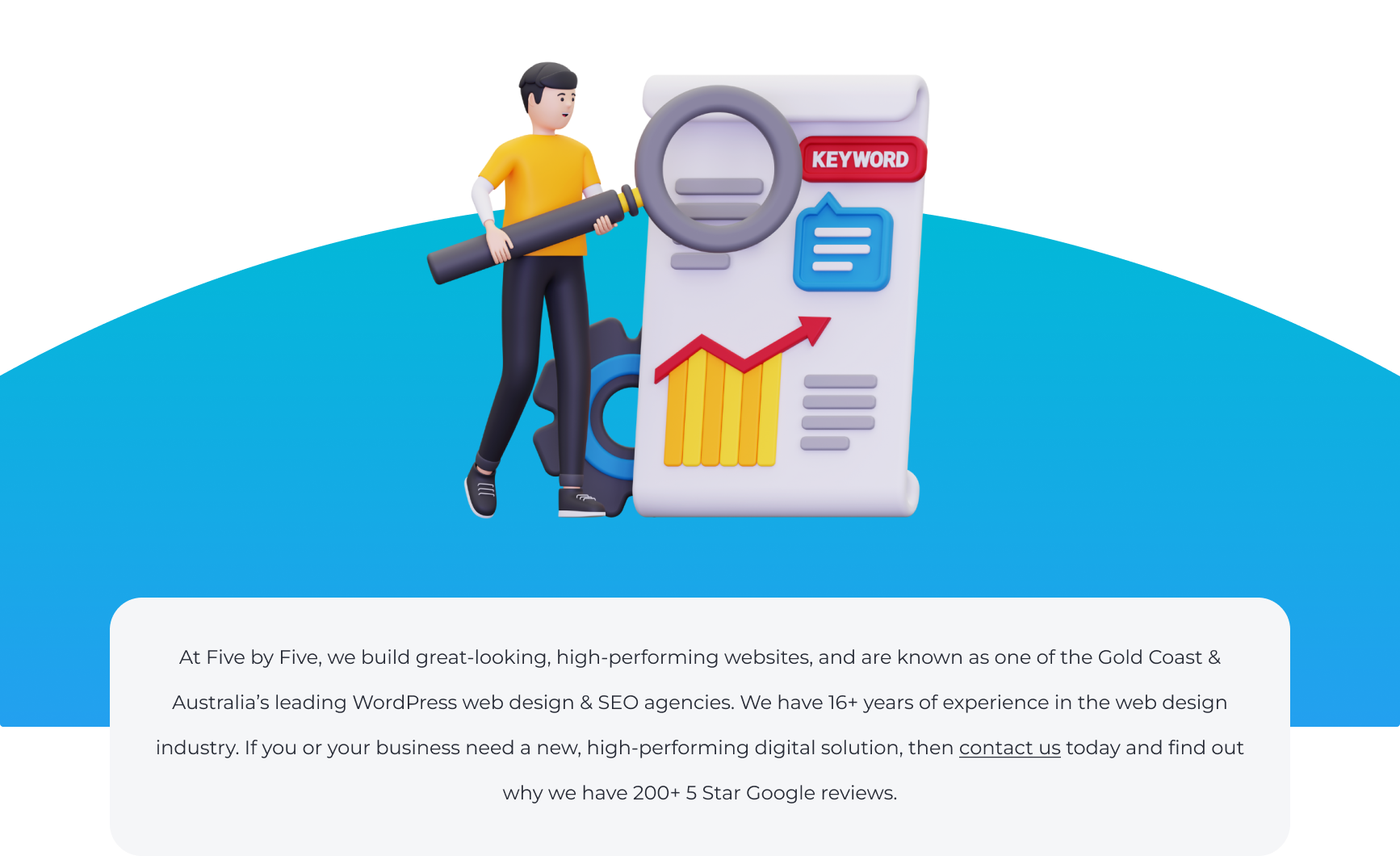Getting discovered online can be hard. If you want to be found through search engines such as Google, you need to understand the basics of SEO. Our beginner’s guide to SEO does just that.
Websites are a lot like real estate: Location, location, location. Just like you want your home to be in a good neighbourhood, you want your website to be in a good spot on the internet – easy to find and close to the top of the search results. SEO, or Search Engine Optimisation, is how you make that happen.
Imagine SEO as a giant puzzle. There are hundreds of pieces to the SEO puzzle, and new pieces are being added all the time, and you never know when you’re done – fun! But don’t worry, you don’t need to put the whole puzzle together to see results. In fact, even just a few well-placed pieces can make a big difference and that’s where this SEO guide comes in.
We’ll introduce you to some of the most important pieces of the SEO puzzle and show you how they fit together. By the end of this beginner’s guide to SEO, you’ll have a good understanding of what SEO is and why it’s so important.

What is SEO?
SEO, or Search Engine Optimisation, is the process of making your website more visible to search engines.
SEO can help you gain more traffic from organic search results. In other words, people who are looking for what you have to offer are more likely to find your site if it’s optimised for search engines. Only the largest, most profitable businesses can afford massive print, digital, and television marketing campaigns, however SEO is inexpensive and effective!
So if you’re looking to drive more traffic to your site, SEO is the way to go. Just be sure to consult our SEO guide before getting started so you can optimise your site the right way.
How does SEO work?
SEO is all about making sure that your site appears as high as possible when people are searching for keywords related to your business. But how does SEO actually work?
Basically, when someone searches for a keyword on a search engine like Google, the search engine looks through all of the websites in its index and ranks them based on how relevant they are to the query. Relevance is determined by a number of factors, including the content on the page, the title and metatags, the structure of the URL, and the number of external links pointing to the page. The higher a website ranks for a given keyword, the more likely it is to be clicked on by searchers.
Of course, SEO is not an exact science, and there is no guarantee that you will rank number one for every keyword that you target. However, by following best practices and keeping up with the latest SEO trends, you can greatly improve your chances of ranking high in search engine results pages (SERPs). And if you need any help along the way, there are plenty of SEO guides (including this one!) and agencies like us (contact us) that can offer valuable advice.

SEO 101: The basics
Here are some of our secrets to master the basics of SEO:
Keyword research
A keyword is a word or phrase that describes the content of your page. When someone searches for that keyword, your page should show up in the results (think about the last thing you searched for and the first couple of results that were displayed). That’s why it’s important to choose keywords carefully to ensure your page is being found by people who are actually interested in what you have to say.
Finding the right keywords for your website can be a bit of a balancing game. The factors to take into account are:
Search volume
Search volume relates to how often people are searching for your keyword.
Relevance
How closely related the keyword is to your product or service.
Intent
The purpose behind the search. Are people looking for information, to buy something, or maybe just out of curiosity?
Competition
The amount of competition you will face when it comes to ranking for that keyword.
You want to make sure you’re choosing relevant, high-traffic keywords that match the users intent.
It’s important to know who your potential customers are and what they’re interested in. This will lead you to what your potential customers might be searching and give you an idea of what keywords to use.
This will give you an initial list of keywords you can use to start researching in more depth. You can use tools such as Google’s keyword planner, Semrush’s keyword magic tool, and various other tools to research the volume, competitiveness, and intent of your keywords further.
If you can find a way to use popular keywords without sacrificing the quality of your content, you’ll be well on your way to SEO success.
Now you’ve got your initial keyword list ready, it’s time to organise them per page. For example, if you’re a clothing brand you wouldn’t target keywords for t-shirts on the same page as keywords for jeans. These are two unrelated search terms that would need their own page.
Each page should have a ‘focus’ keyword along with ‘supporting’ keywords. For example, the clothing brand selling t-shirts, could have the focus keyword t-shirts for this page and have supporting keywords such as tees, short-sleeved t-shirts, and graphic tees.
On-page optimisation
Once the keywords are sorted per page and you have identified each pages focus keyword you can start to optimise the pages for these keywords.
Start by including the keywords (and synonyms of the keywords) in your headings, meta titles and descriptions, alt tags, URLs and throughout the content as this will help search engines understand what your pages are about and in turn rank your content for said keywords.
Ensure you use them naturally without keyword stuffing (you’ll hear this term a lot throughout this guide) them or trying to manipulate rankings.
Headings
Headings on your page are structured via importance. For example, your H1 is the pages main heading and ideally at the top of the page. Followed by subheadings (H2, H3, H4, etc.).
It’s important to have only a single H1 per page. The H1 should also include your focus keyword. Subheadings (H2, H3, H4, etc.) can be used multiple times throughout the page and should include support keywords and synonyms of your focus keyword where possible.
Meta titles and descriptions
Your meta title (also commonly referred to as a title tag) is the headline displayed for your page within the search engine results. This should indicate to the user the topic of the page. Try to get a keyword and a call-to-action in here as well.
Your meta description is the text that sits under the meta title in the search engine results, this should be an engaging summary of your page’s content. Try to also include your keyword and a call-to-action within here.

Alt text
Your alt text is a bit of HTML code that describes an image. It is mainly used by screen readers, which are browsers used by people with a visual impairment for example. But, search engines such as Google also look at this to understand what the image is about.
Not every single image, icon, and graphic need an alt text. If the image is purely used for decorative purposes, it does not need an alt text. Make sure not to stuff these with keywords, use the alt text only to describe the image. For example, the above image that is pointing out where the meta title and description is has the alt text “example of meta title and meta description”.
Body text
The text (or body content) within the page itself is, of course, very important. We’ll go into more depth on content as a whole later in the guide, but for now, just know that keeping your content aimed at your audience whilst also including keywords is ideal (without keyword stuffing).
URLs
Your sites URL structure is important for a couple of different reasons. The first is in relation to reporting and data tracking. Within tools, whether that be Google Analytics, Semrush, or Google Search Console, it becomes a lot easier to view sections of your website’s analytics when it is structured correctly.
The second is in relation to shareability and user experience. A short, concise, and relevant URL is going to be easier for not only search engines but also users to understand. It also makes it easier to share across different platforms and will increase the engagement of that URL due to other users understanding it.
And of course for SEO benefits, if you can nail a correctly structured URL that is concise and relevant whilst also including your keyword, that is a plus!

Content
One of the most important factors in SEO is high-quality content. Content can take many forms: blog posts, articles, new service pages, videos, podcasts, infographics and more. The type of content you create will depend on the goals of your campaign and how well each format is suited to your audience.
Search engines and users love fresh content because it tells them that a site is active, and when you add new pages or blog posts regularly, you’re giving them exactly what they’re looking for. That’s why it’s so important to keep your content current and keep producing new content. Not only will it help improve your SEO, but it will also keep your visitors coming back for more. But, how do you know if people will find your content? This is where the keywords come into play. Ensure your content is high-quality and optimised based on your keyword research. But, not every piece of content needs to be focused on keywords with the sole purpose of ranking well. Some pieces of content may be there to provide a better user experience (more on user experience later).
Always remember – quality over quantity. Search engines are designed to provide users with the best possible results, and they often prioritise quality over quantity. It’s better to have shorter articles that are high-quality rather than long articles that are boring and not so good.
Backlinks
Backlinks are links from other websites to your website. They act as a vote of confidence, telling search engines that your site is trustworthy and relevant. In addition, backlinks help to increase your website’s visibility and traffic. Ultimately, backlinks are essential for your SEO strategy because they help to improve your site’s ranking. And once again, quality over quantity, a website with a few high-quality backlinks (more on these later) is likely to rank higher than a website with hundreds of low-quality backlinks.
So if you’re looking to improve your SEO, make sure to focus on good, quality backlinks that have real value and authority!
Core web vitals
As any SEO guide will tell you, web vitals are important for SEO. They help to ensure that your website is loading quickly, interacting smoothly with users, and providing a good experience. In today’s competitive landscape, this is more important than ever. Potential customers are spoiled for choice, and if your site isn’t up to standard they’ll simply go elsewhere.
User Experience (UX)
After all the previous points mentioned, we still need to make sure we’re providing the user with a good experience when visiting and interacting with the site. This will increase the engagement rate on your site which in turn produces better results.
Don’t let your focus on SEO allow you to ignore UX.
Benefits of SEO
Where to start?! There are many benefits of SEO, but the three primary ones are: increased traffic, improved click-through rates, improved conversion rates, ultimately leading to more conversions.
Increased traffic: SEO can help to increase the number of visitors to a website by improving its ranking in search engine results pages. This is because websites that rank higher on SERPs are more likely to be seen by users.
Improved click-through rates: SEO can also help to improve the click-through rate (CTR) of a website by making sure you rank for relevant search terms. CTR is the percentage of users who click on a result in SERPs. A higher CTR means that more users are clicking on a website’s result, which can lead to increased traffic.
Improved conversion rates: SEO can also help to improve conversion rates, which is the percentage of users who take a desired action on a website after they have clicked on a result in SERPs. A higher conversion rate means more users are taking the desired action, such as making a purchase or signing up for a newsletter. SEO can help to improve conversion rates by making it easier for users to find the information they need on a website.
More conversions (leads, enquiries, purchases, sign ups, etc.): The end goal of most marketing campaigns is more conversions. This isn’t different with SEO. Increasing traffic, CTR, and conversion rates ultimately lead to more leads, purchases, sign ups, or what ever your goal is.

How SEO has changed
Ten years ago, SEO was a completely different game. The rules were different, the strategies were different, and so too was the landscape. In fact, if you go back just a few years further, SEO barely even existed! But times have changed and SEO has become an essential part of any digital marketing strategy.
For one thing, Google now processes about 63,000 searches a second, which is 5.6 billion per day and 2 trillion per year. Now that’s what we call search volume!
Google has also become much more sophisticated than it used to be. They’ve introduced new algorithms (like Panda and Penguin) that have drastically changed the way SEO is done. They’ve also started to crack down on black hat SEO tactics (tactics designed to exploit SEO algorithms without adding any value for actual site users), which has made the playing field a bit more level for everyone.
In addition, SEO has become much more complex. It’s no longer just about cramming keywords into your content – it’s about creating high-quality content that appeals to both search engines and human readers. And last but not least, social media has come onto the scene in a big way. These days, SEO isn’t just about what’s on your website – it’s also about what’s being said about you on social media.
All in all, SEO has come a long way in the last ten years. What used to be a relatively simple process has become increasingly complex however this means there are now more opportunities for those who are willing to put in the work.
Next steps for your SEO journey
To assist you with mastering the basics of SEO, feel free to use our SEO audit checklist. This basic audit will give you an understanding of where your website is at.
SEO is ever evolving, but mastering the basics will give you a great start. We hope our SEO guide helped you master the SEO basics, but if you’re not confident in your skills, then partnering with Five by Five is definitely the way to go. We are SEO experts and can help you get your website ranking highly in search engines – after all, we’ve already done it a thousand times before! Contact us today to find out more.





